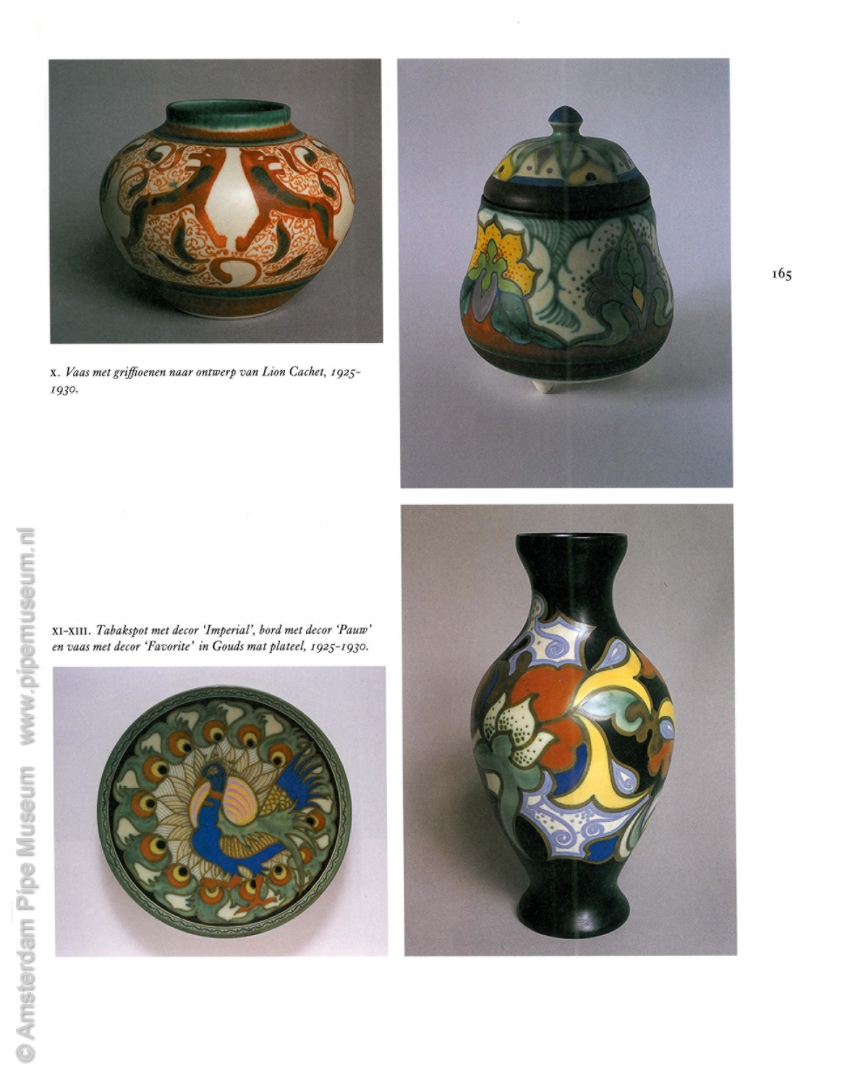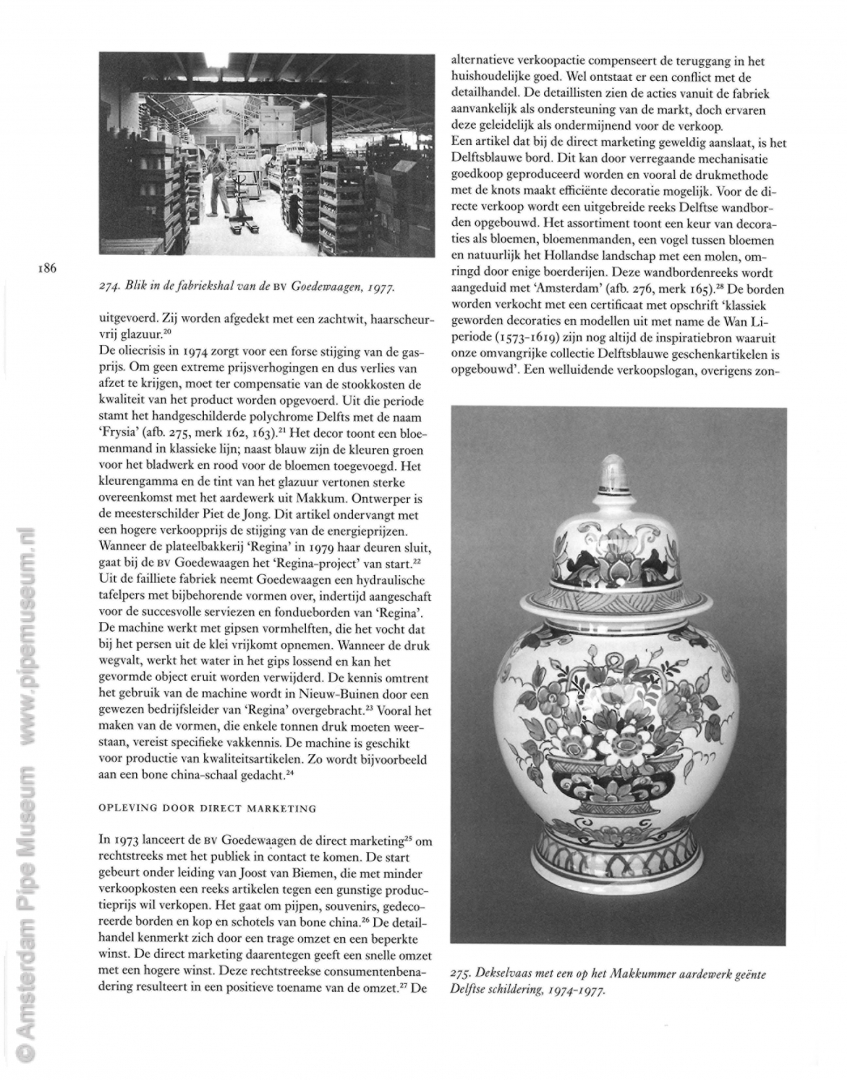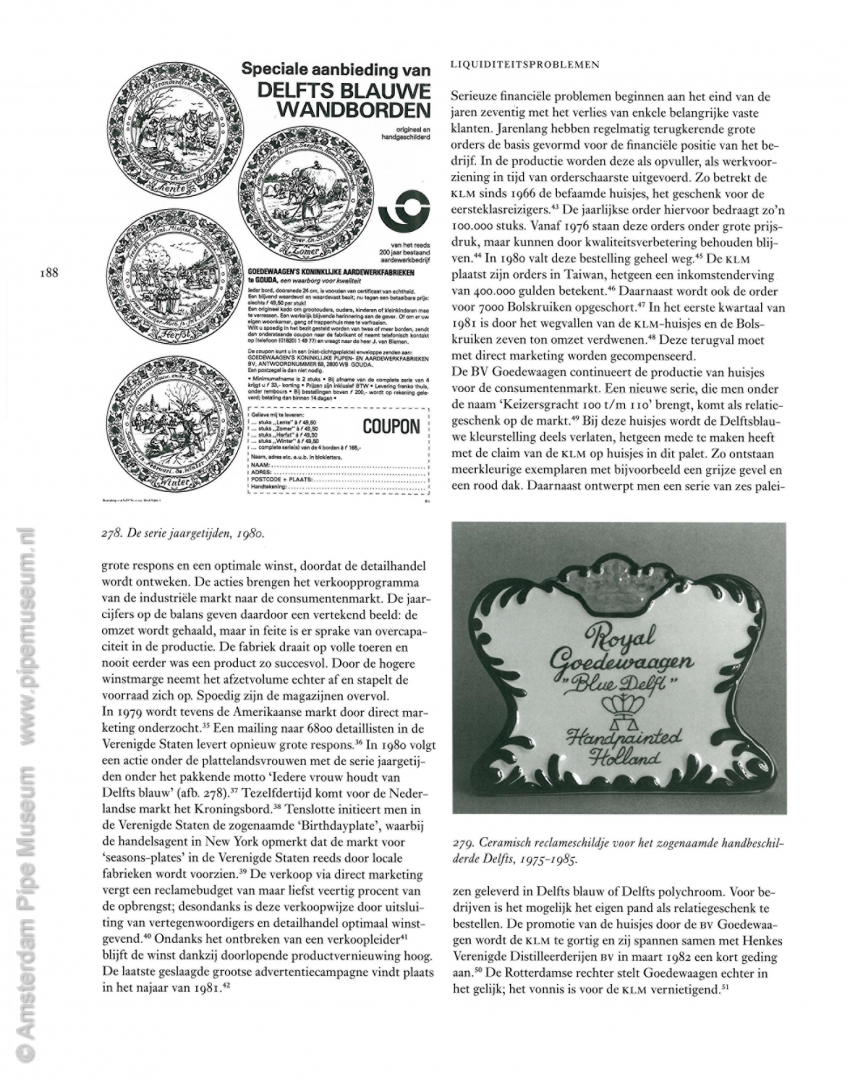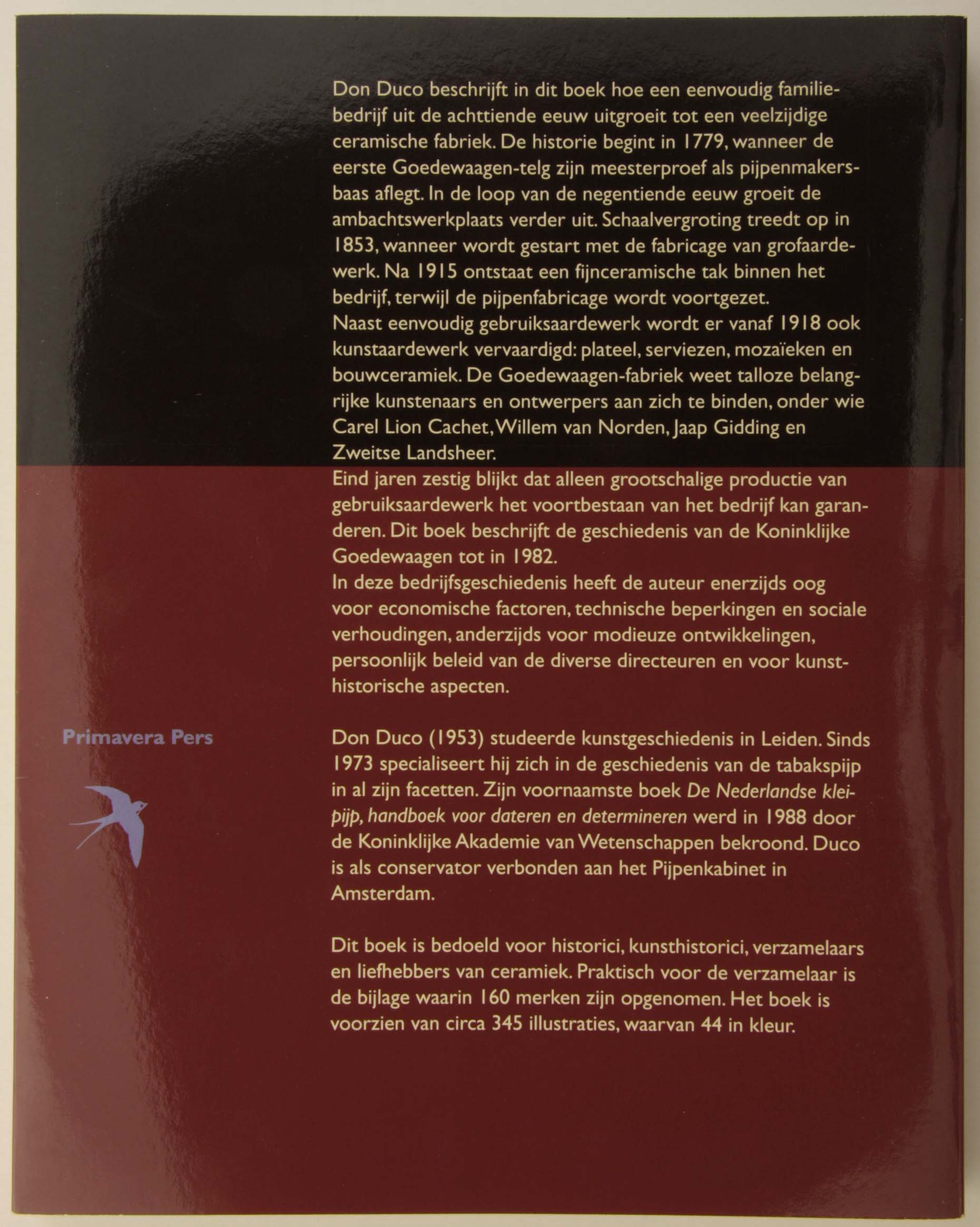Royal Goedewaagen,
a versatile ceramic factory (1779-1982)
Original title: Koninklijke Goedewaagen, een veelzijdig ceramisch bedrijf (1779-1982)
by D.H. Duco
In the past decade several monographs on Dutch factories for fine ceramics were published. Comparative to books on Rozenburg (1983) and Plazuid (1994) now the history of the Gouda factory of the Goedewaagen family is added to this series. The volume counts 224 pages, well filled having used all the imaginable space in the book, including a register containing a remarkable number of maker's marks finishing on the very last page. The information in this monograph is complete, including a list with 171 marks and references to sources of over 20 pages printed in three rows per page, which show that the author used many hundreds of different sources. The richness in illustrations (281 b/w and a section of 44 photographs in colour) almost make you forget that the book is a factory history at first and not a printbook.
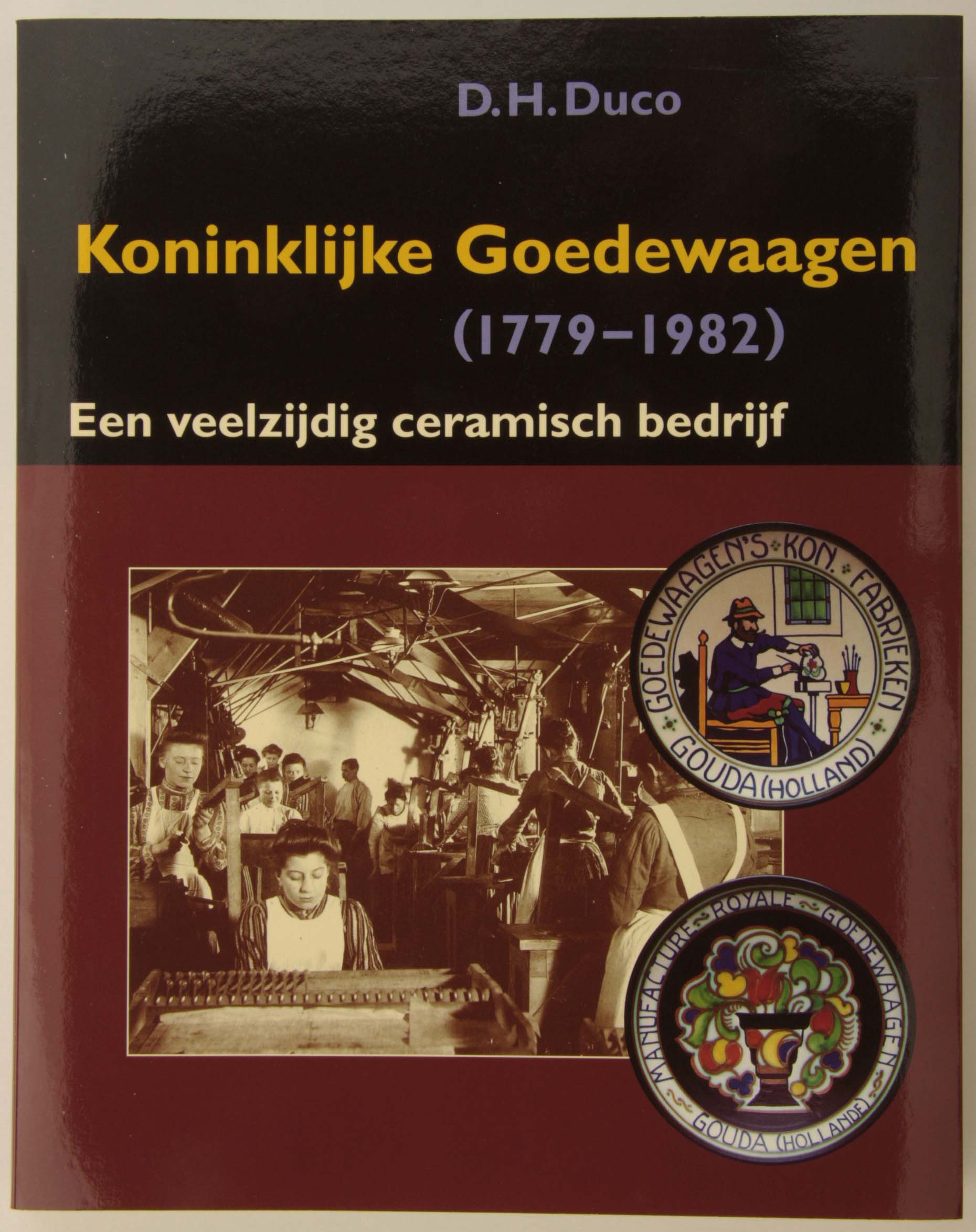
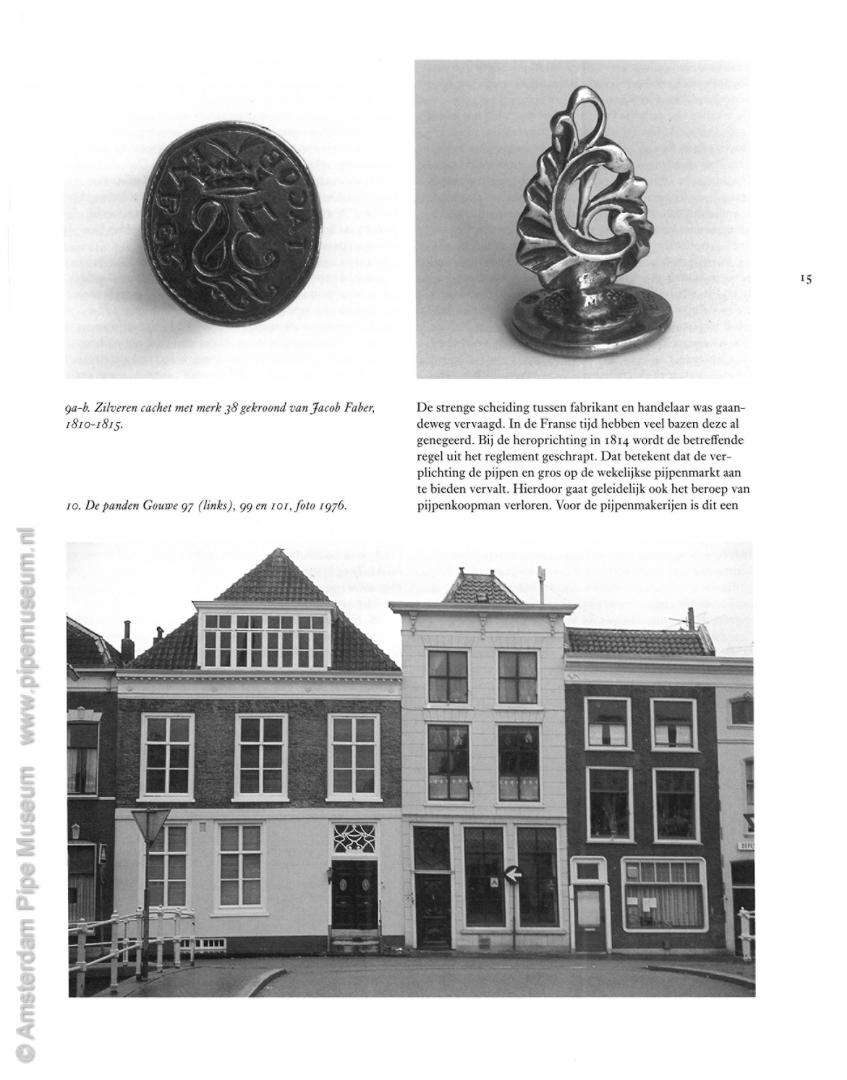
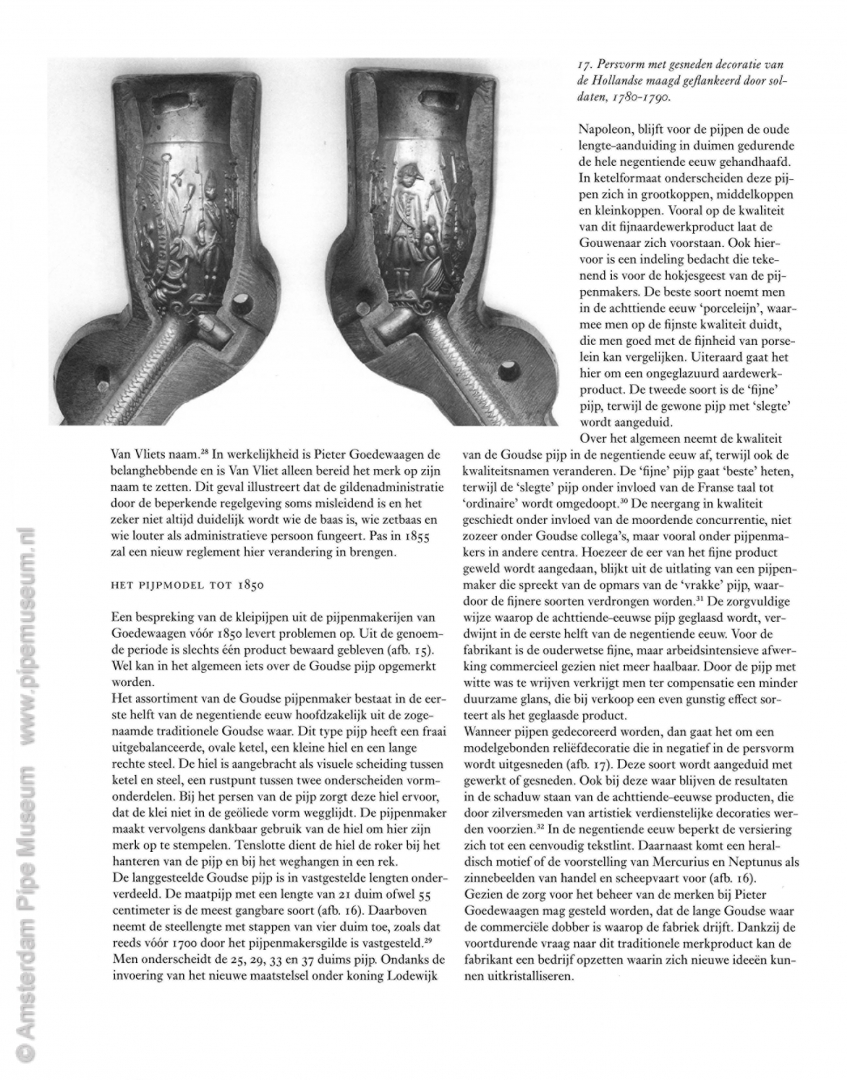
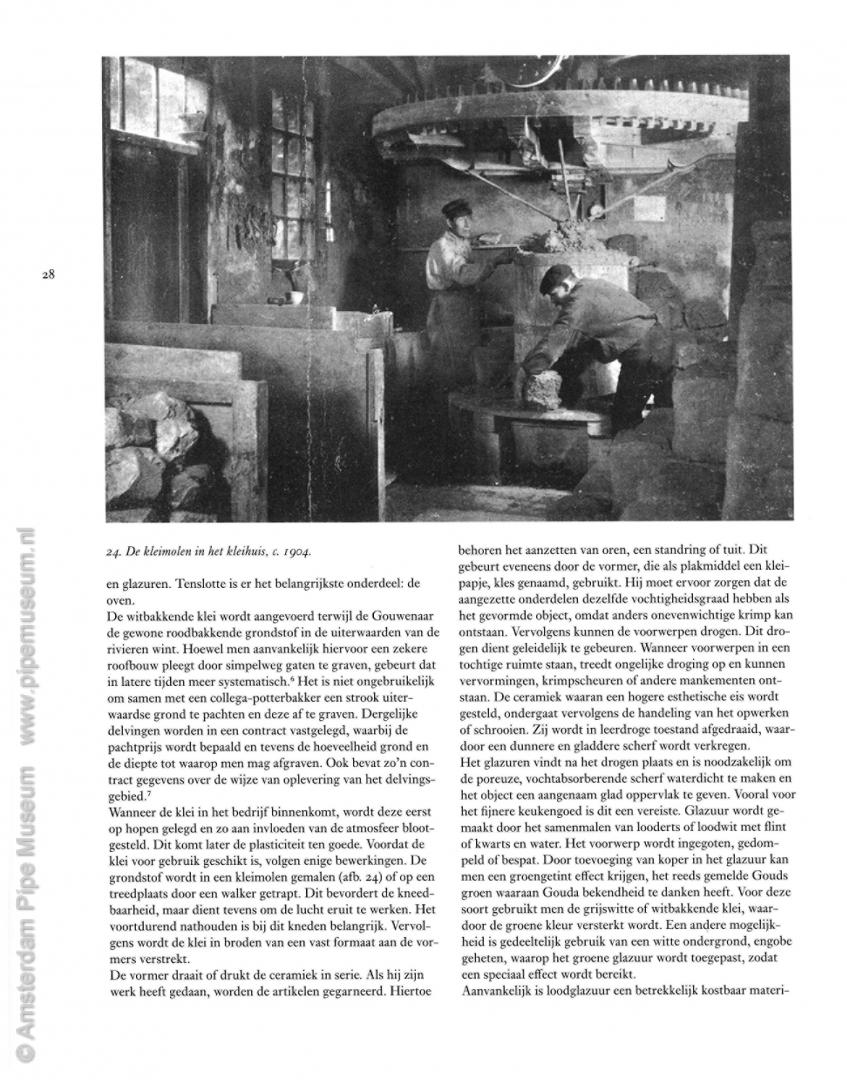
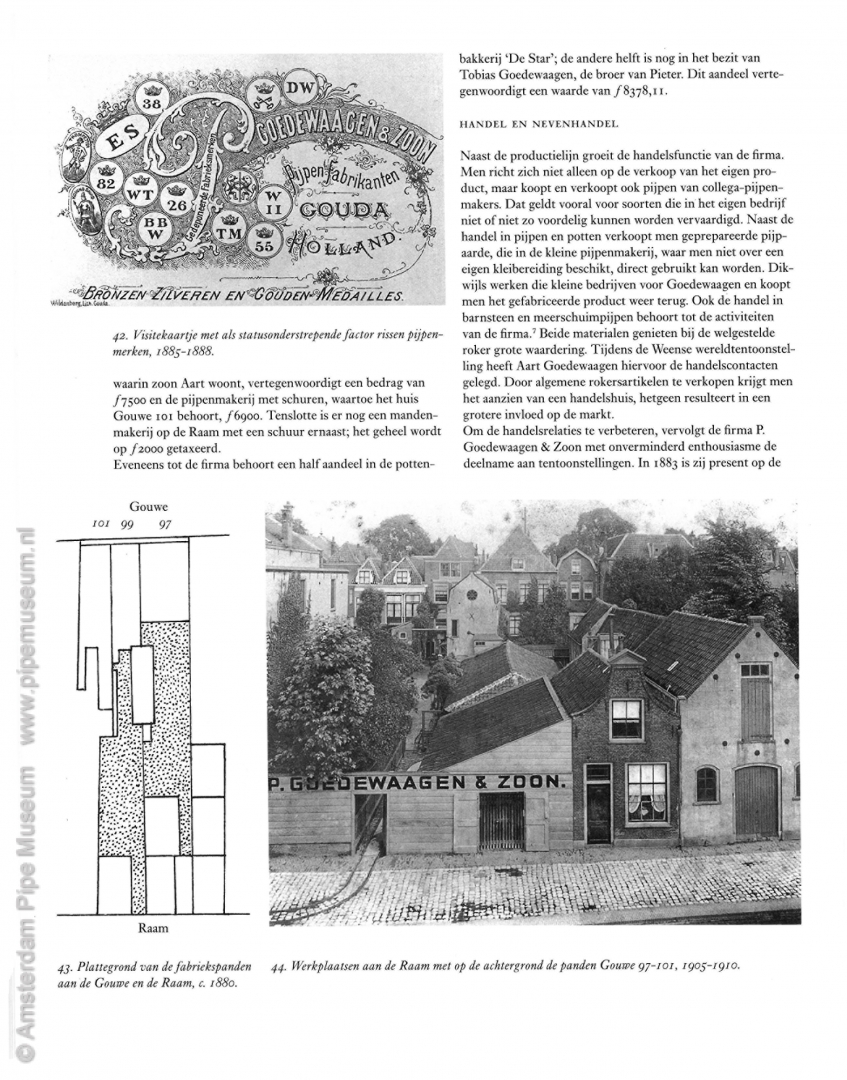
Don Duco, known from other publications as a specialized pipe expert, now appears to have studied ceramics. The work is strictly chronological, starting with a certain Dirk Goedewagen, doing his apprentice in 1779 as a pipe maker. It proves that Duco is serious in his research, bringing up all the needed information from the archives to introduce the reader into the family business, including contracts of personnel, the buying and selling of houses and many more. Next to the family history, the book also deals with the various types of ceramics that have been part of the Goedewaagen Firm. Next to the first product, the clay tobacco pipe, the line was extended with ordinary ceramics by 1850. In the twentieth century more artistic products were added: nicely decorated plateel, mosaics, serica and unica. Parallel to the general history separate sections are dedicated to each of these products, giving an abstract of the peculiarities of that type of ware.
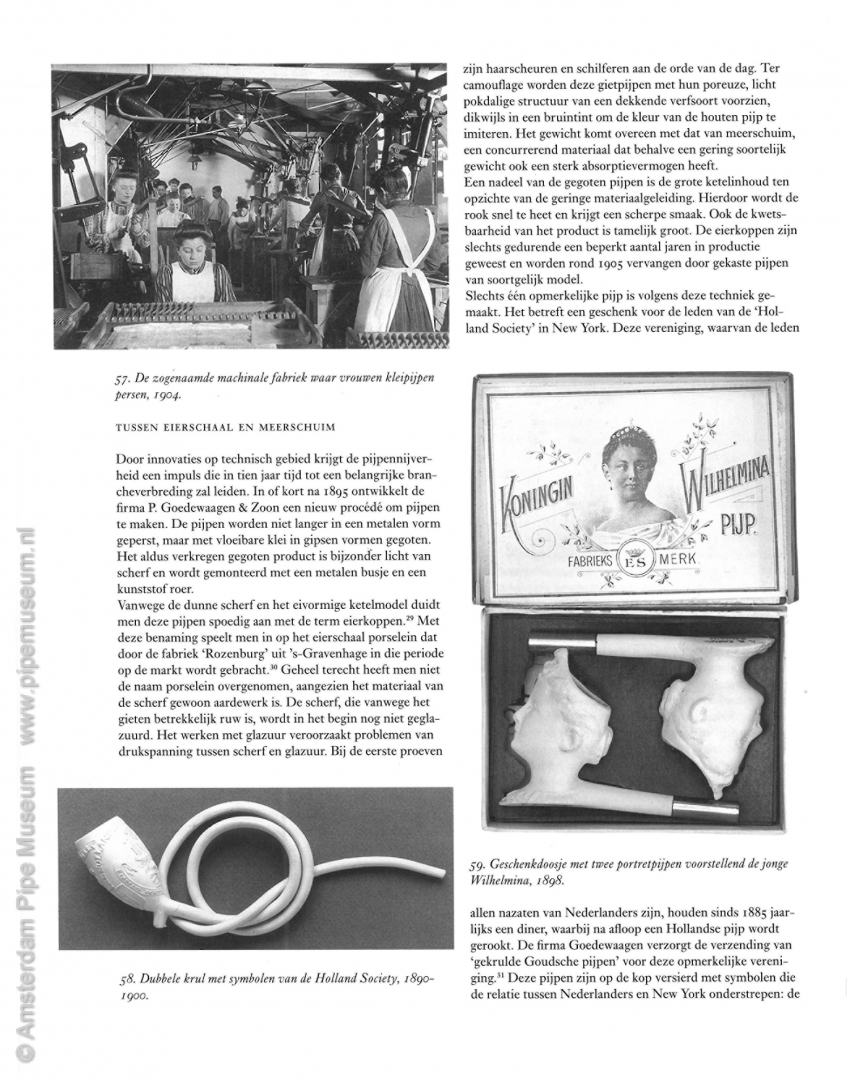
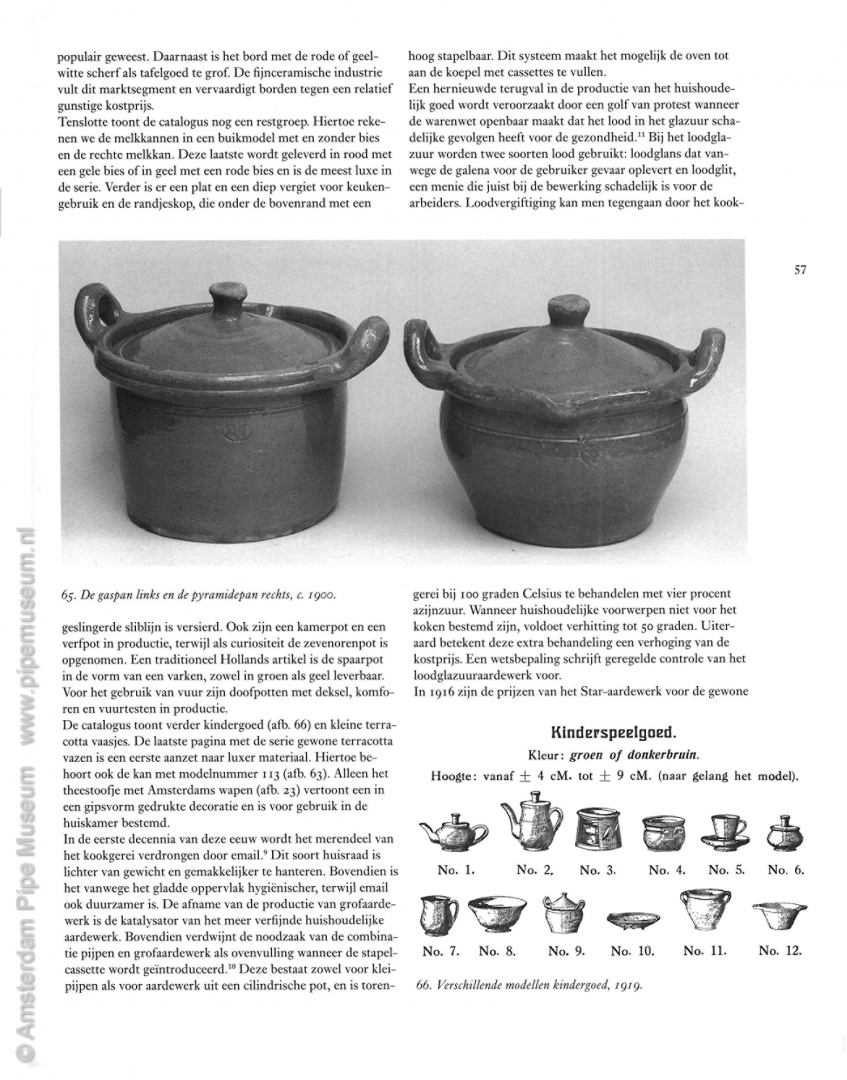

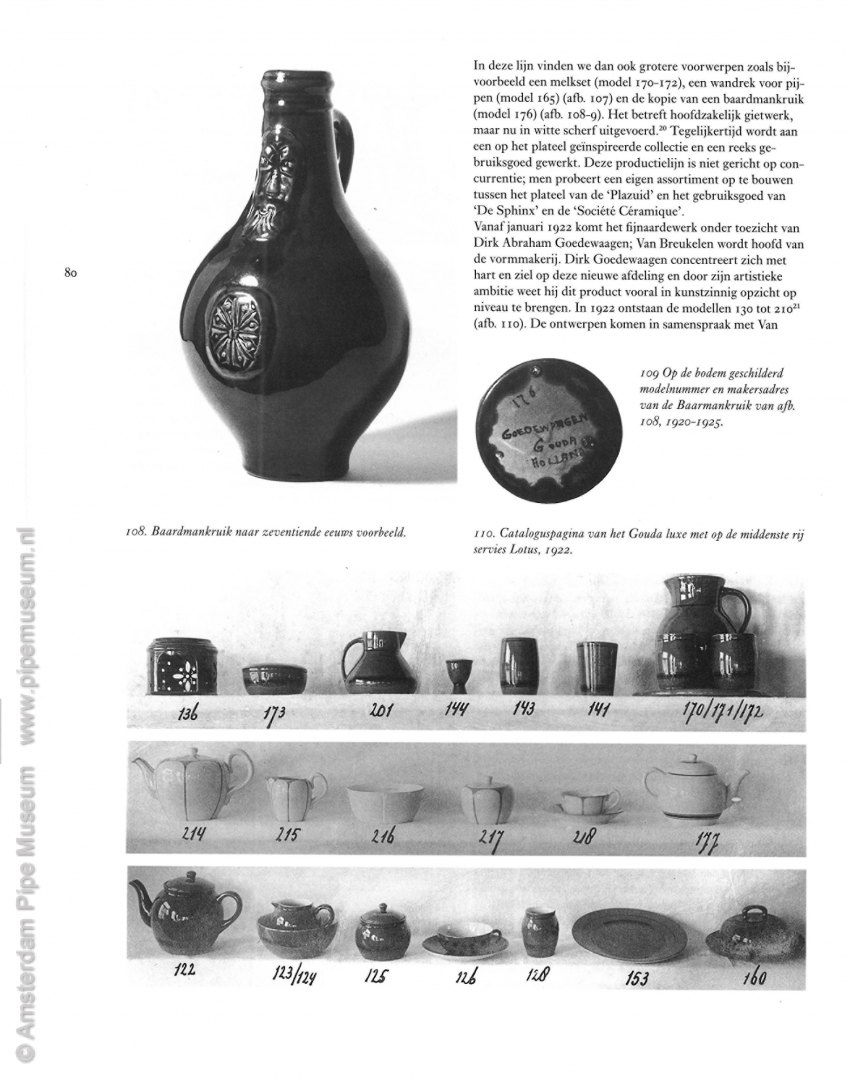
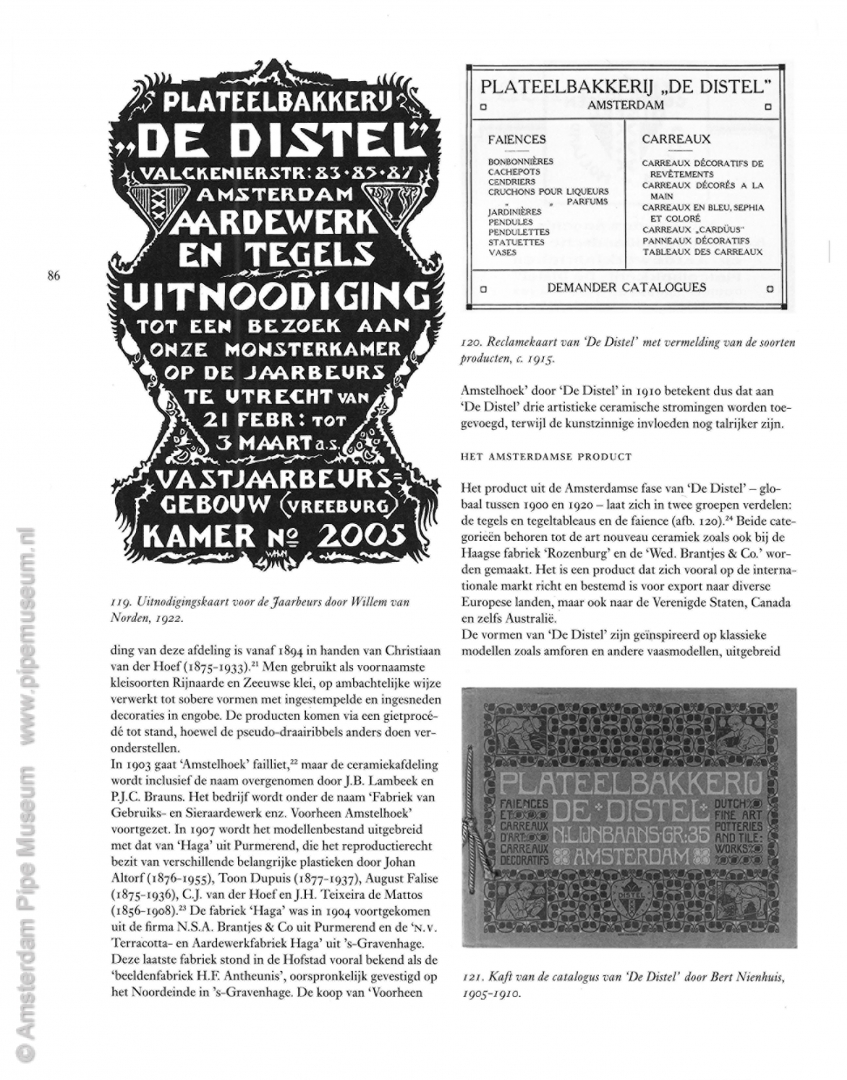
The great variety of products is in accordance with the many-sided history of the factory and serves all target groups for the book. For the clay tobacco pipe the interest will be limited to a group of collectors. In contrast to the pipes, the ordinary ceramics are a theme on which very little sources can be found; this book fills the gap. From the art historic point of view the hand painted plateel production is more interesting, especially after having taken over the Amsterdam factory De Distel, that caused an incoming stream of artists and craftsmen in the factory. The post-world war production of dinner services in numerous varieties is an interesting subject to show varieties in decorations and to follow the fashion in course of time. This subject is extremely popular nowadays.
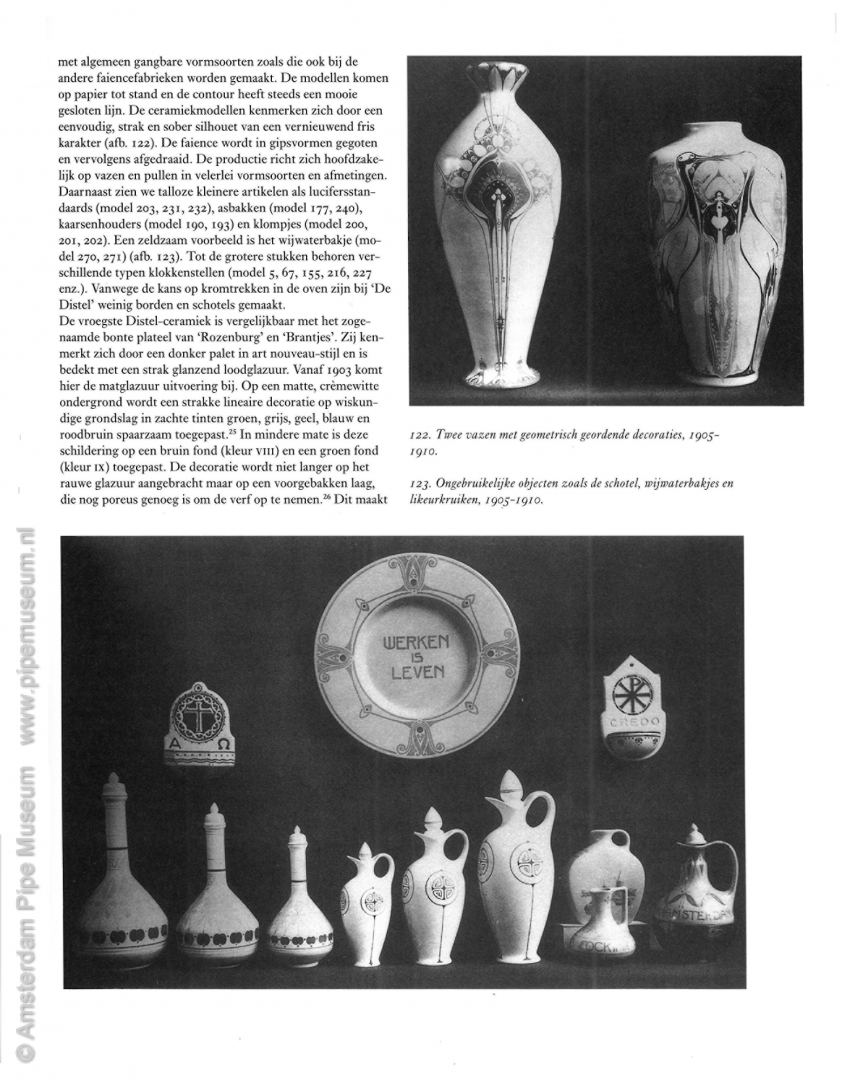
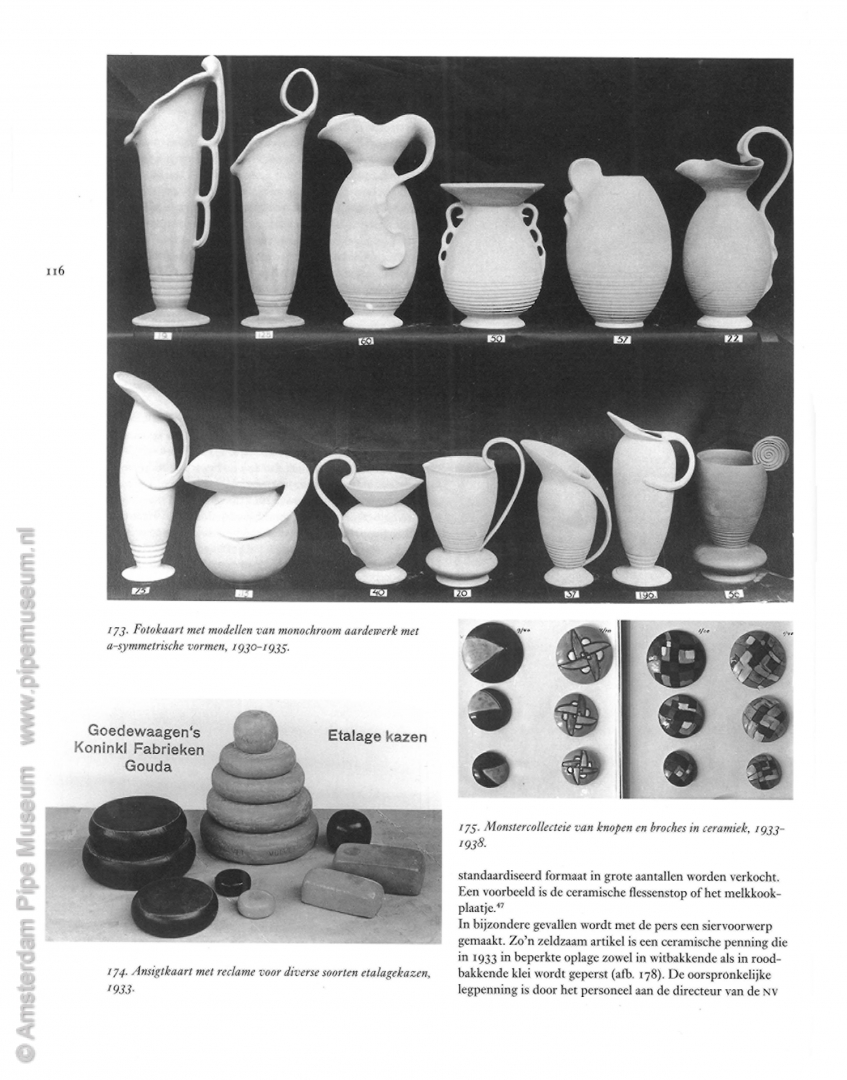
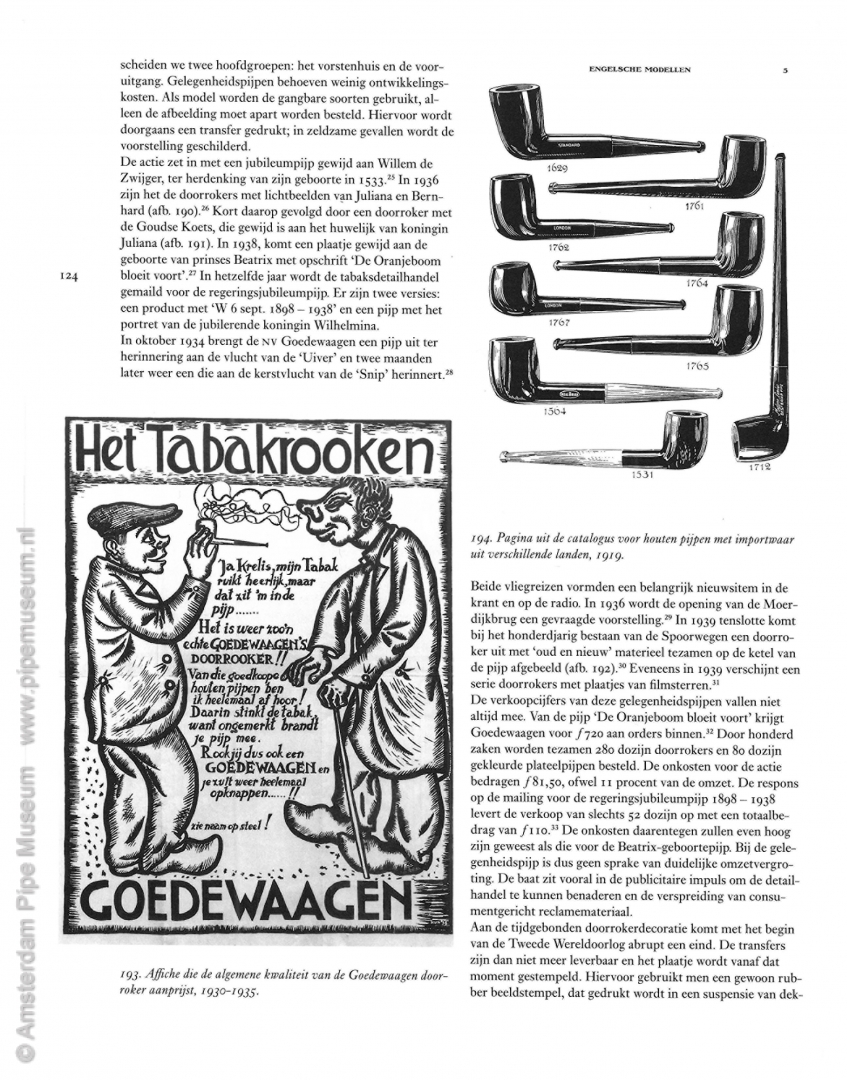
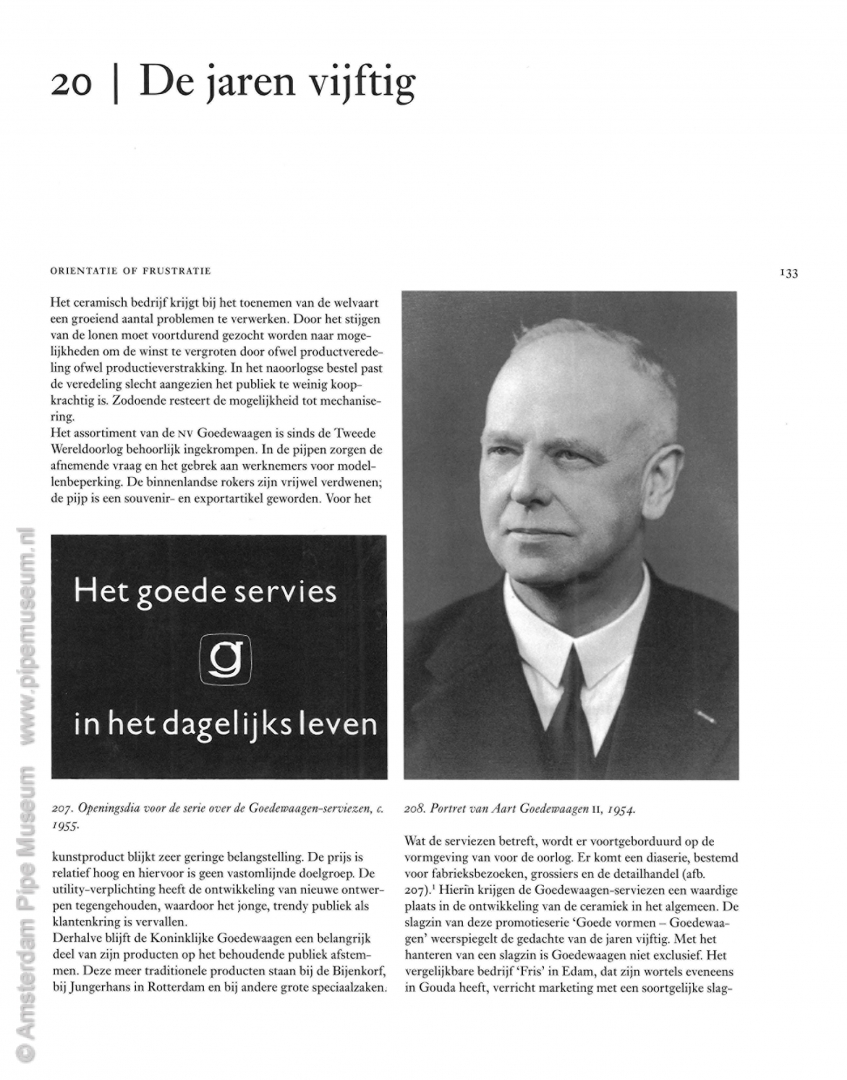
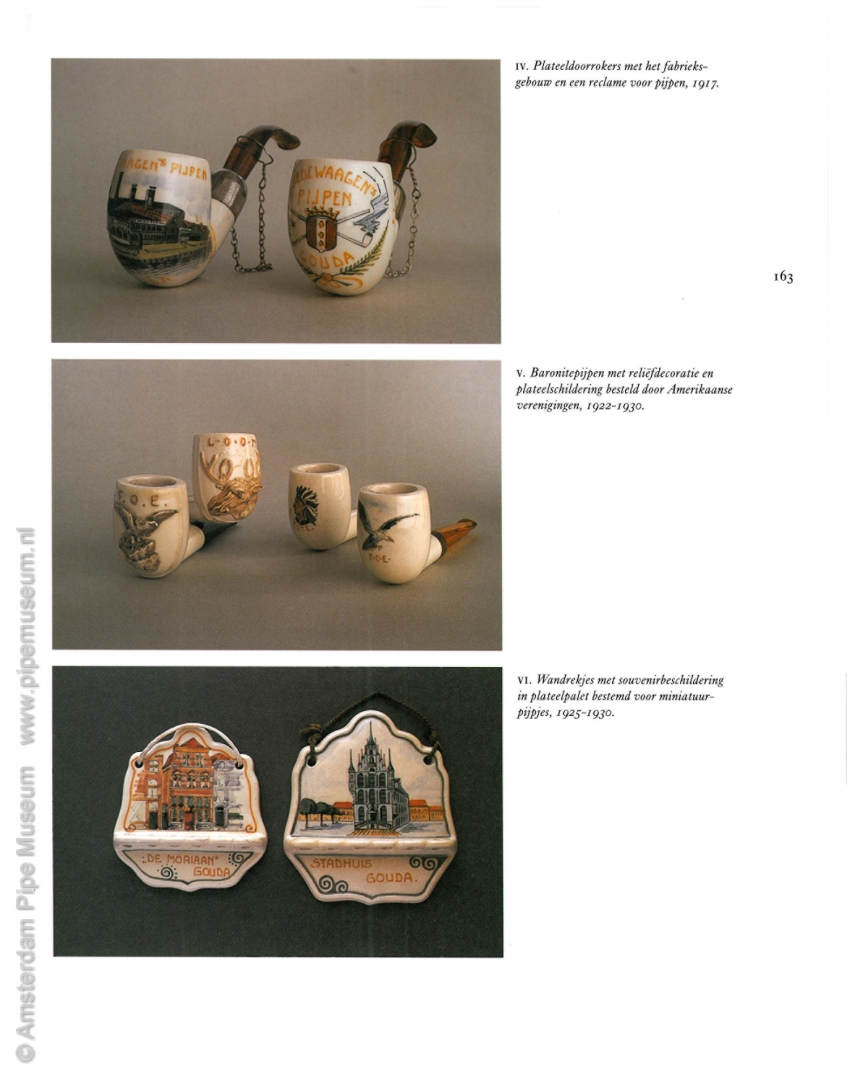
Duco united these different aspects of ceramic works from one factory successfully and described each of them systematically and clearly throughout time. The author avoids the common mistake to attribute the products to the merits of one or a few designers. Instead, every article seems to have its own place in the economical continuation of the family business of Goedewaagen, as is more sensible. Duco knows to indicate the importance of every product clearly from out the ceramic tradition as well as the designers thought, the economic rentability, the marketing or the personal preference of the director. In this line an almost perfect unity between text and illustrations is achieved. The balanced explanation of the versatile production results in an interesting and easy reading history of the Goedewaagen works. The book offers a valuable set of clear information on the intricate organisation of a mid-sized factory, with all its aesthetic, social, economic and personal actors. Researchers in Dutch ceramic history and even in any other branch of production will find an explamplary source in Duco's book.
---------------------
Publisher: Pijpenkabinet Foundation, Amsterdam & Primavera Pers, Leiden, 1999
ISBN 90-74310-54-0
224 pages, size 28 x 22 cm, softcover
325 photos (44 in colour), 171 makers marks
Price € 55 (excluding P&P
